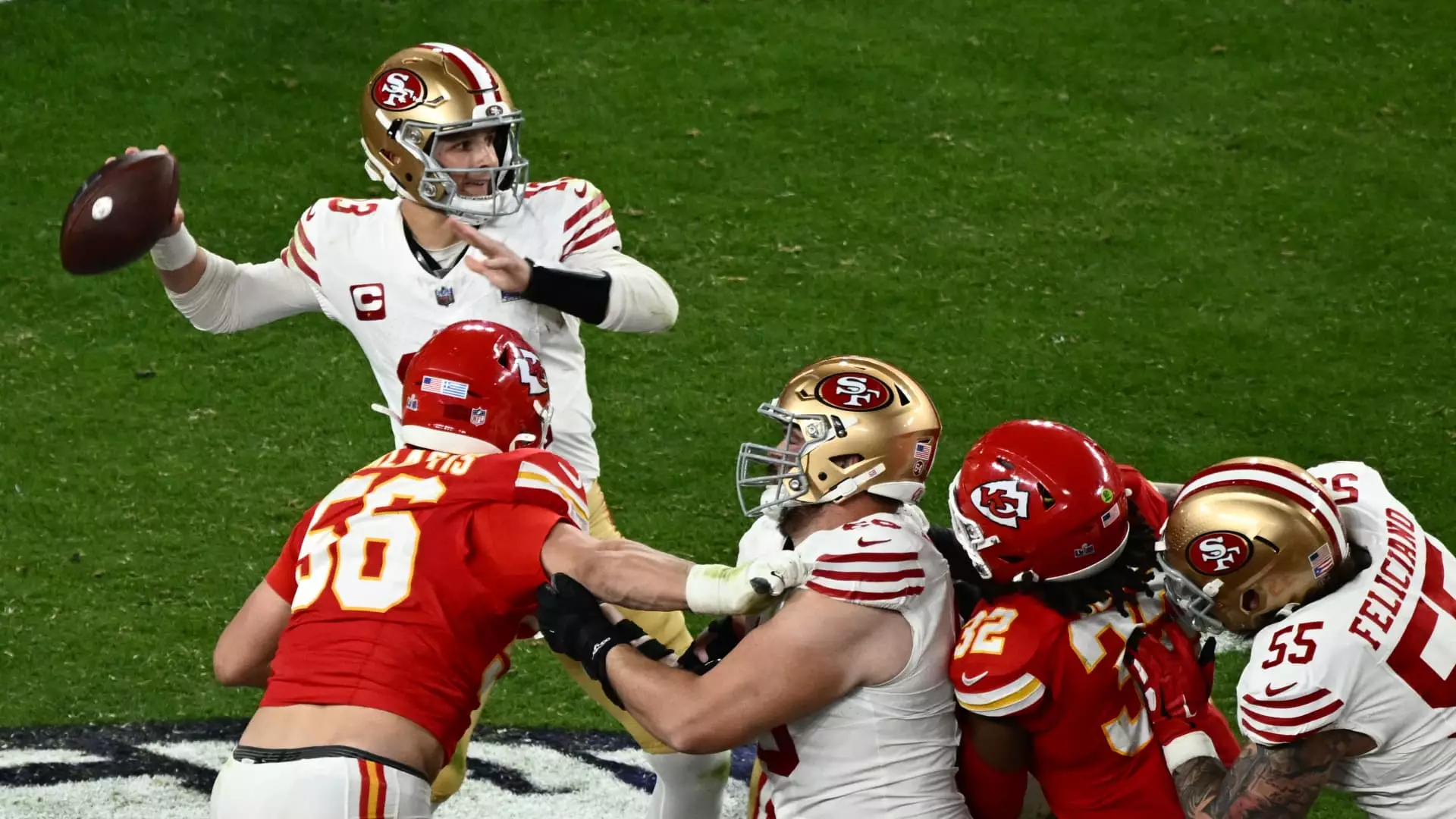In recent years, sports organizations have increasingly relied on advanced analytics and technologies to enhance their talent evaluation processes. This shift becomes especially pronounced in the context of the San Francisco 49ers, a franchise that has witnessed a radical transformation in its scouting methodologies. Central to this transformation is quarterback Brock Purdy, whose unexpected rise from the last pick in the 2022 NFL Draft to a standout performer exemplifies the pitfalls of traditional scouting techniques. As the 49ers’ president Al Guido underscores, the incorporation of artificial intelligence (AI) into talent assessment could potentially redefine how teams evaluate athletes across various sports.
Brock Purdy’s ascent is a noteworthy case study illuminating the limitations of antiquated scouting metrics. Selected as the 262nd overall pick, Purdy’s selection underscores a broader flaw within the NFL’s evaluative frameworks that often overlook key player attributes. Many conventional metrics fail to capture the nuanced skills and psychological traits that can distinguish a successful quarterback from others. Purdy’s ability to lead the 49ers to a Super Bowl appearance serves as a testament to the necessity of evolving these metrics to be more holistic in their assessments.
Al Guido’s proposition of employing AI in scouting reflects a growing recognition within the sports community that the future of talent evaluation must be data-driven and multifaceted. This technological embrace is particularly vital in soccer, a sport characterized by its global reach and varying competition levels. The ability to assess players from diverse leagues can significantly enhance recruitment strategies, allowing teams to cast a wider net when identifying potential talent. Guido notes that the traditional pathways to premier leagues, like the English Premier League, now allow for access to talent from anywhere, emphasizing the need for advanced analytics to navigate this expansive landscape.
The San Francisco 49ers are pioneering a balanced approach that marries traditional scouting with innovative analytics, setting a standard for how sports organizations may operate in the future. This dual strategy, as emphasized by Guido, seeks to integrate qualitative scouting insights with quantitative data analysis, creating a more comprehensive evaluation process. This method not only encompasses player statistics but also considers psychological assessments and performance in game situations, providing a fuller picture of an athlete’s potential.
As discussions around player contracts and extensions heat up particularly concerning Purdy, the implications of these evaluative advancements become clearer. The 49ers stand at a critical juncture, where their approach to player evaluation could influence the retention of key talent. By continuing to refine their scouting methodologies and integrating AI tools, the franchise positions itself to make informed decisions that align with both statistical data and on-field performance. Ultimately, the 49ers’ endeavors are not merely an attempt to reshape their scouting processes; they represent an evolution in how professional sports teams leverage technology to foster long-term success.

